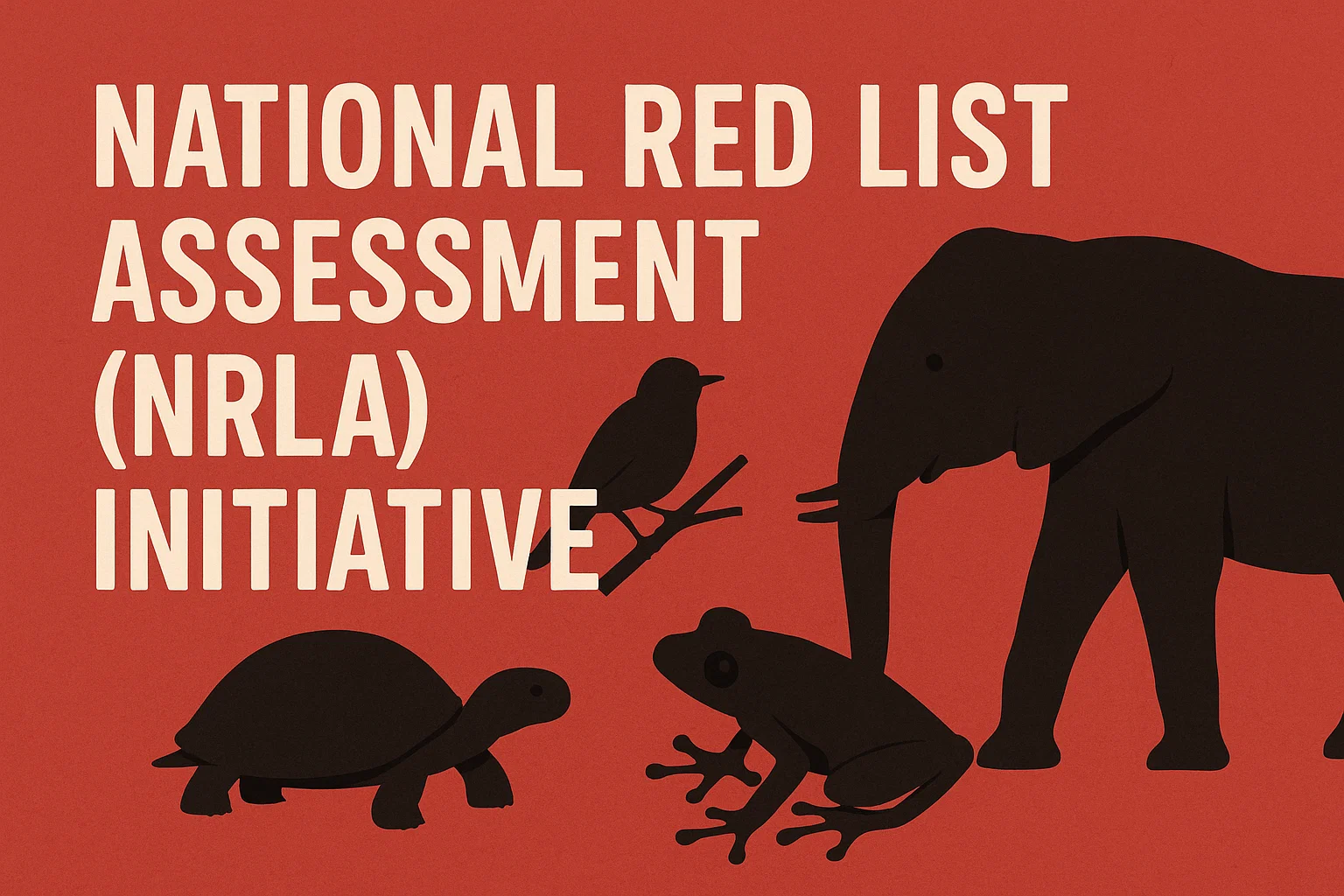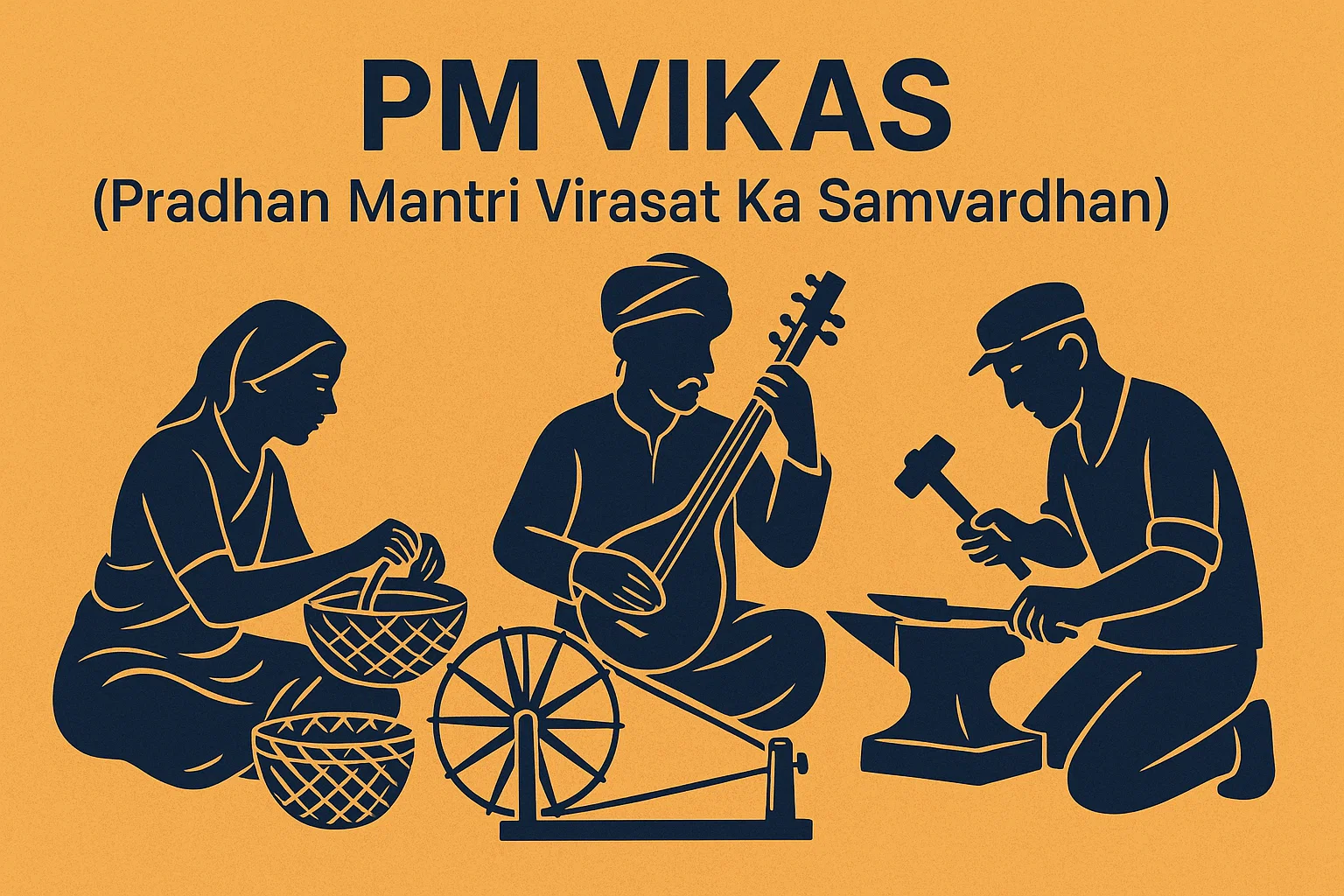Women in Ancient and Medieval India
Explore the changing status, roles, and rights of women in ancient and medieval India—essential for UPSC GS Paper I, Essay, and optional subjects.

The status of women in ancient and Medieval India is important for UPSC as it reflects on the evolution of Indian society, gender roles, and cultural norms. It aligns with GS Paper I (History and Society) and is often asked in Mains and Essay papers. Understanding women’s roles and contributions in different periods helps in analysing continuity and change in social structures and informs perspectives on present-day gender issues. It also benefits candidates with history, sociology, or anthropology optionals, making it essential for a holistic and analytical UPSC preparation.
The ancient and medieval periods of Indian history reflect a rich legacy shaped by major political, social, and cultural changes. Women’s roles and status were influenced by religious beliefs, economic structures, and political systems. While often confined by patriarchal norms, women served as caretakers, educators, and cultural preservers. Despite restrictions, they exercised agency in religious and cultural domains. The medieval era brought further shifts due to invasions and new administrative systems, leading to both evolving roles and heightened limitations on women’s rights and freedoms.
Women in Ancient and Medieval India
Part I: Status of Women in Ancient India
1. Indus Valley Civilisation (c. 3300–1300 BCE)
- Archaeological finds such as terracotta figurines of women, particularly the ‘Mother Goddess,’ indicate the symbolic importance of female fertility and divine femininity.
- Burial remains show little distinction between male and female graves, suggesting social parity in funerary practices.
- Presence of female deities and priestesses inferred from figurines and seals suggests spiritual or religious importance.
- However, lack of deciphered script limits our understanding of their actual social and economic roles.
2. Early Vedic Period (c. 1500–1000 BCE)
- Vedas portray women as intellectually and spiritually capable; some like Ghosha, Apala, and Lopamudra composed hymns in the Rigveda.
- Women had access to education and spiritual debates; they could become Brahmavadinis (learned women).
- Participation in rituals and religious sacrifices was common; husband and wife jointly performed yajnas.
- The Swayamvara system allowed women to choose their spouses; widow remarriage was permitted.
- Property rights were minimal, but women had respectable status within families.
3. Later Vedic Period (c. 1000–600 BCE)
- With increasing ritualism and patriarchy, the freedom enjoyed by women during the early Vedic period began to decline.
- Education and participation in religious discourse were restricted to men.
- Manusmriti and other Dharmashastra texts began formalizing women’s subordination to male kin.
- Emergence of practices like dowry and child marriage in Brahmanical traditions.
- Women’s status became increasingly tied to their roles as wives and mothers.
4. Mahajanapada and Mauryan Period (c. 600–200 BCE)
- The rise of heterodox sects like Buddhism and Jainism offered relatively more egalitarian spaces for women.
- Buddhist texts such as the Therigatha show voices of early nuns expressing philosophical thoughts and spiritual insights.
- Jainism also allowed female ascetics, though with stricter rules.
- Ashokan edicts mention welfare of women, including establishment of shelters and charitable institutions.
- However, Kautilya’s Arthashastra shows women mostly as economic dependents, concubines, or entertainers in royal households.
5. Post-Mauryan and Gupta Period (c. 200 BCE–600 CE)
- Women’s roles became increasingly confined to domestic spheres, especially in upper-caste Hindu society.
- Sati practice began to be recorded, though not widespread.
- Devotion to pativrata dharma (duty of the wife) became central to female identity.
- Yet, Prabhavatigupta, daughter of Chandragupta II, acted as regent for her minor sons, showing political involvement.
- Women in drama and literature (e.g., Shakuntala in Kalidasa’s work) were idealized as gentle, pure, and subordinate.
6. Sangam Age (Early South Indian Kingdoms, c. 300 BCE–300 CE)
- Tamil Sangam literature depicts a diverse range of women – from heroines in love poetry to female warriors and traders.
- Women were respected for their intellect, chastity, and contributions to literature.
- Some enjoyed property rights and participated in warfare.
- Early forms of the Devadasi system were associated with ritual and cultural roles, not exploitation.
7. Harshavardhana’s Period (c. 606–647 CE)
- Xuanzang’s travel accounts mention that women in Harsha’s time practiced modesty and had limited public life.
- Royal women such as Rajyashri influenced dynastic politics.
- The general trend of orthodox revival limited educational and religious roles of women.
Part II: Status of Women in Medieval India
1. Early Medieval Period (c. 650–1200 CE)
- The period witnessed a gradual decline in women’s autonomy in North India due to growing influence of Smriti texts and patriarchal norms.
- Sati, child marriage, and restrictions on widow remarriage became more widespread among upper castes.
- In contrast, southern kingdoms like the Cholas, Cheras, and Rashtrakutas saw active participation of women in temple administration and land ownership.
- Inscriptions show women donating land, commissioning temple sculptures, and managing religious establishments.
- Bhakti Movement began in this period, giving women like Andal, Karaikkal Ammaiyar, and Akka Mahadevi a spiritual platform.
2. Delhi Sultanate (c. 1206–1526 CE)
- Islamic invasion introduced the purdah system and stricter gender segregation, especially among upper-class Muslims and Hindus.
- Nevertheless, several elite women were educated and engaged in literary, religious, and administrative activities.
- Razia Sultana (r. 1236–40) ruled Delhi, defying gender norms and resisting courtly opposition.
- Women like Rani Durgavati (Gondwana) actively fought invaders.
- Muslim court women like Gulbadan Begum wrote memoirs (Humayun-nama), while Hindu women continued Bhakti traditions.
3. Southern Kingdoms and Vijayanagara Empire (c. 1336–1646 CE)
- In South India, women continued to have significant roles in temples, including as Devadasis, musicians, and dancers.
- Queens like Rani Chennamma of Keladi and Abbakka Chowta of Ullal resisted colonial invasions.
- Matrilineal inheritance systems prevailed among the Nairs in Kerala and Tuluvas in Karnataka, ensuring women’s rights in property.
- Vijayanagara inscriptions reveal that women acted as accountants, merchants, and donors.
4. Mughal Period (c. 1526–1750 CE)
- Mughal noblewomen lived in seclusion but exerted cultural and political influence through the zenana (women’s quarters).
- Empress Nur Jahan effectively ruled during Jahangir’s illness, issuing royal firmans and coins in her name.
- Jahanara Begum and Zeb-un-Nissa were accomplished poets and spiritual leaders.
- Education was promoted among elite women; some Mughal princesses studied Persian, Arabic, and theology.
- However, societal norms continued to endorse purdah, child marriage, and domestic confinement.
5. Late Medieval Period (c. 1750–1857 CE)
- As regional kingdoms weakened and colonial influence emerged, patriarchal norms became more rigid in many parts.
- Sati became more ritualised among upper castes, especially in Bengal and Rajasthan.
- Widowhood brought extreme social isolation, especially for young widows.
- Yet, women like Ahilyabai Holkar administered Malwa with remarkable efficiency and compassion.
- Rani Velu Nachiyar led armed resistance against British colonialists in Tamil Nadu.
- The period also saw early critiques of oppressive practices like sati, setting the stage for later reform movements.
Themes Across Time Periods
Social and Legal Status of Women in Ancient and Medieval India
The status of women was shaped by regional customs, cultural traditions, and prevailing power structures.Women’s rights and roles varied significantly across time periods and regions, reflecting the diversity of Indian society.
Vedic Period (1500–500 BCE)
- Women enjoyed a respected position in society.
- They had access to education and participated in religious rituals.
- The Rigveda mentions several female sages and philosophers, highlighting their intellectual and spiritual importance
Early Hindu Law
- The Manusmriti outlined women’s roles within a patriarchal framework.
- Women had limited rights to inheritance and property.
- Their primary responsibilities were centred around family and household duties, reinforcing male dominance.
Under Islamic Rule (Delhi Sultanate and Mughal Empire)
- Islamic law (Sharia) influenced legal and social practices in Muslim-ruled regions.
- Customs like purdah (female seclusion) became more widespread.
- Legal frameworks governed women’s rights in marriage, divorce, and inheritance, with both protections and restrictions.
Under Hindu Dynasties
- Women’s status varied based on region and dynasty.
- Some dynasties, like the Chola and Kakatiya kingdoms in the south, saw women in leadership roles.
- In many areas, however, patriarchal norms continued to limit women’s autonomy and public roles.
Practices like Sati and Child Marriage
- The Sati practice (widow self-immolation) existed in some regions, particularly among the upper classes, but was not universally observed.
- Child marriage became more prevalent, especially among the elite, reflecting rigid social customs and concerns about female chastity.
Literary Representations
- Epics like the Ramayana and Mahabharata portrayed influential female characters.
- Despite literary recognition, women’s actual agency and opportunities were often constrained by societal expectations and limitations.
Laws and Regulations
- Legal practices varied across regions and ruling dynasties.
- Hindu communities followed Hindu law, while Muslim-majority areas adhered to Islamic law.
- Despite established legal codes, implementation and interpretation often depended on local traditions and the discretion of rulers.
- Customary practices frequently overrode formal legal systems in everyday matters.
Marriage
- Marriages were predominantly arranged, with families—especially male elders—taking the lead in selecting suitable matches.
- Women generally had limited autonomy in choosing their spouses.
Age of Marriage
- Marriage age differed based on region, caste, and social status.
- Early marriages, particularly of girls, were common in rural areas and among the nobility.
Polygamy
- Men were sometimes allowed to have multiple wives, especially in certain communities and under specific legal or social norms.
- Women, by contrast, were expected to remain in monogamous marriages.
- Polygamy was more frequently practiced among elite or royal households.
Women’s Rights to Property and Inheritance in Ancient and Medieval India
-
Limited Property Rights:
-
-
- In patriarchal societies, women had restricted rights to own or control property.
- Land and wealth were usually held by male members, with women needing male intermediaries to access property.
-
-
Dowry Practices:
-
-
- The dowry system was widespread, where the bride’s family gave gifts or property to the groom’s family at marriage.
- This custom often caused financial burden and could lead to the exploitation of the bride’s family.
-
-
Exceptions and Regional Differences:
-
-
- In certain matrilineal or tribal societies, women had relatively more control over property and inheritance.
- Some communities allowed women to exercise greater authority in family and economic matters.
-
-
Male-Dominated Inheritance:
-
-
- Inheritance systems generally favored sons, with property passing down through the male line.
- Daughters often received minimal or no share of family wealth.
-
-
Reform and Resistance:
-
-
- Over time, social movements and reform efforts challenged unequal inheritance laws.
- In some regions, legal provisions were introduced to support daughters’ right to inherit, though actual implementation varied.
-
-
Legal Position of Women:
-
-
- Women’s legal rights were shaped by a mix of formal laws and prevailing cultural beliefs.
- While some legal protections existed, many women still faced discrimination without proper legal remedies.
-
-
Role of Customary Laws:
-
- Traditional customs and community norms heavily influenced women’s rights.
- These informal rules could either uphold or undermine gender equality, depending on the region.
Challenges Faced by Women in Ancient and Medieval India
- Patriarchal Structures:
Society was dominated by patriarchal norms, with men holding authority in most spheres of life, while women were often assigned subordinate roles. - Restricted Educational Access:
Educational opportunities were largely limited to males, depriving most women of formal learning and hindering their social and intellectual growth. - Economic Dependence:
Women’s roles were mostly confined to the household, restricting their involvement in economic activities and making them reliant on male family members for financial support. - Rigid Social Norms:
Cultural expectations emphasized traits like obedience, chastity, and submissiveness, significantly limiting women’s personal freedom and decision-making. - Child Marriage and Dowry:
Early marriage was common, exposing young girls to exploitation and health risks. The dowry system imposed financial strain on families and often led to mistreatment and discrimination against women.
Advancements or Changes in Women’s Status Over Time
- Legal Reforms:
Key laws such as the Hindu Succession Act (1956) and the Dowry Prohibition Act (1961) were enacted to strengthen women’s rights in areas like inheritance and protection from dowry-related abuse. - Improved Access to Education and Employment:
Government initiatives—like scholarships and reservation policies—have expanded opportunities for girls in education and women in the workforce, enhancing their literacy and financial independence. - Women’s Empowerment Movements:
Various movements and organizations have actively worked to promote gender equality, raising awareness on issues such as domestic violence, workplace discrimination, and reproductive health, contributing to stronger social and political participation by women. - Evolving Social Perceptions:
Societal views on gender roles have gradually progressed, with growing appreciation for women’s achievements in diverse areas such as politics, science, arts, and literature.
Impact of Social Movements, Religious Reforms, and Cultural Transformations
- Social Movements:
Movements such as women’s suffrage, feminism, and broader women’s rights campaigns have been instrumental in confronting patriarchal norms. They mobilized support to demand political, social, and economic equality for women. - Religious Reforms:
Reformers like Raja Ram Mohan Roy and Swami Vivekananda questioned orthodox interpretations of religious scriptures that upheld gender discrimination. Their emphasis on equality and justice helped foster more progressive views on women’s rights. - Cultural Shifts:
Urbanisation, globalization, and exposure to diverse worldviews have led to evolving cultural values and changing gender roles. However, the pace and extent of this transformation differ across various regions and communities
Conclusion
In summary, examining the status of women in ancient and medieval India reveals a complex and layered picture shaped by historical, social, and cultural factors. From the Vedic age through the medieval period—with its shifting dynasties and power structures—women’s roles and rights changed in response to evolving political and religious influences.
During both periods, women contributed in various spheres such as family life, community affairs, and religious institutions. However, their lives were often restricted by patriarchal systems and societal expectations. Despite these limitations, many women showed resilience and asserted their agency through religious patronage, artistic expression, and involvement in reformist movements.
The transition from ancient to medieval times was marked by significant shifts due to invasions, cross-cultural interactions, and the rise of new religious and philosophical currents. While these developments brought changes to women’s conditions, many traditional gender norms continued, highlighting the persistent nature of certain social patterns in Indian history.
Subscribe to our Youtube Channel for more Valuable Content – TheStudyias
Download the App to Subscribe to our Courses – Thestudyias
The Source’s Authority and Ownership of the Article is Claimed By THE STUDY IAS BY MANIKANT SINGH


